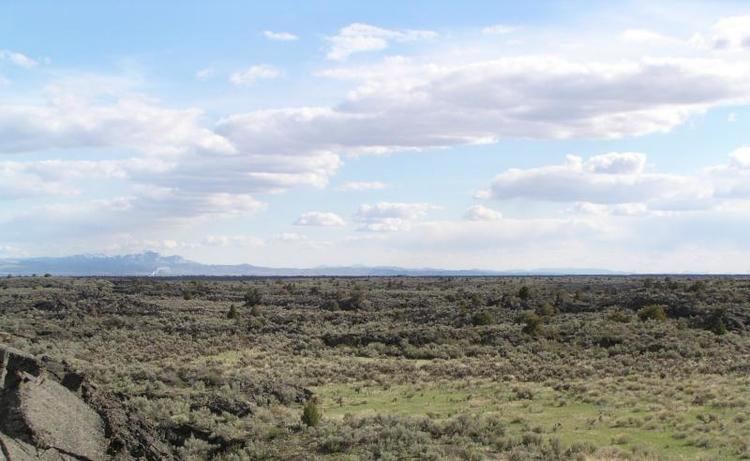 | ||
A lava field, also called a lava plain or lava bed, is a large expanse of nearly flat-lying lava flows. Such features are generally composed of highly fluid basalt lava, and can extend for tens or even hundreds of miles across the underlying terrain. The extent of large lava fields is most readily grasped from the air or in satellite photos, where their typically dark, nearly black color contrasts sharply with the rest of the landscape. According to the US Geological Survey, monogenetic volcanic fields are collections of cinder cones, and/or Maar vents and associated lava flows and pyroclastic deposits. Sometimes a stratovolcano is at the center of the field, as at the San Francisco Volcanic Field in Arizona. Monogenetic volcano fields have systematic growth patterns that suggest they represent single magmatic systems in the same way that stratovolcanoes do, but monogenetic volcanoes grow laterally rather than vertically (Wood and Shoan, 1984). Detailed mapping indicates that some cinder cones in monogenetic fields (e.g., Cima, California, and Timber Mountain Volcanic Field, Nevada) may have had multiple eruptions separated by tens to hundreds of thousands of years (Wells, et al., 1989). Thus, some monogenetic cones may actually be polygenetic. This possibility differs from observations of historic eruptions (Wood, 1979), and is physically difficult to understand because cinder cone conduits are narrow and must solidify within a few years of eruption. Nonetheless, such multiple eruptions appear to have happened at least twice: Other cinder cones need to be closely reexamined.
Some of the most ancient geological remnants of basaltic plains lie in Canada's Precambrian Shield. Eruption of plateau lavas near the Coppermine River southwest of Coronation Gulf in the Arctic, built an extensive plateau about 1200 million years ago with an area of about 170,000 km2 (66,000 sq mi), representing a volume of lavas of at least 500,000 km3 (120,000 cu mi). The lavas are thought to have originated from a mantle plume center called the Mackenzie hotspot.
